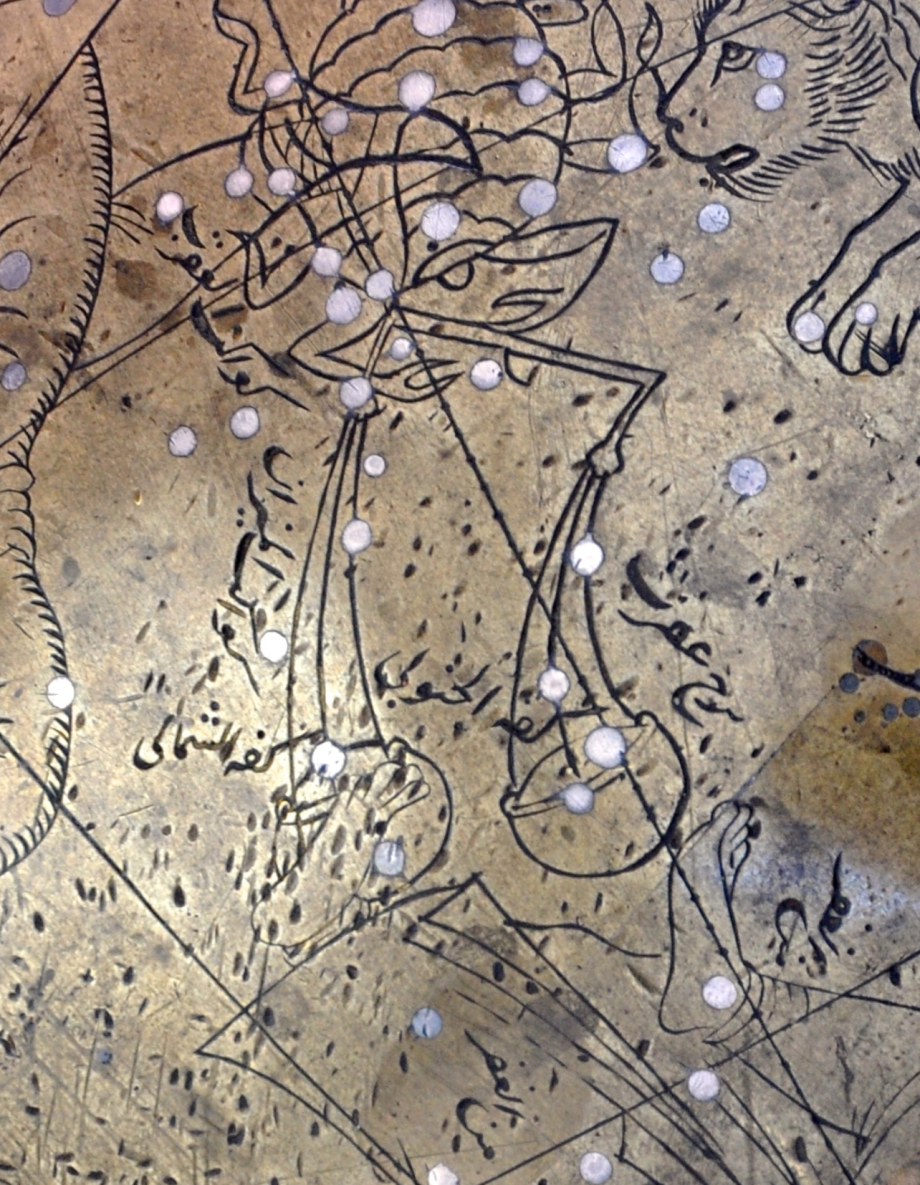
Savage-Smith states that in Greek times, as in much earlier Sumerian times, the constellation now known as Libra was seen as the two claws of the scorpion, with Scorpio and Libra combined essentially into one constellation. The concept of the asterism as a balance or scales, which was a later introduction, calls to mind the equality of day and night at the autumnal equinox, which occurs at the break between the House of Virgo and the House of Libra. Hyginus states “this sign is divided into two parts on account of the great spread of the claws. One part of it our writers have called the Balance. But the whole constellation together was put in the sky, it is said, for the following reasons”. He then recounts that Orion boasted he could kill anything on earth. Earth, angered at this, sent the Scorpion, which is said to have killed him. Zeus then placed Scorpio in the heavens as a lesson to men not to be too self-confident. Artemis, who had suffered an insult from Orion, requested Zeus that it be placed so that when Scorpio rises, Orion sets.
On the Manuchihr globe the name of the constellation is kawākib al-mīzān (the constellation of the balance). The names of stars in Libra all reflect the Greek tradition. The large star in the pan to the north is labeled kiffah al-shimālī (the northern plate of the balance [β Librae]). The large star on the other pan is termed kiffah al-janūbī (the southern plate of the balance [α 1, 2 Librae]).
Libra is composed of eight formed stars and nine unformed ones. The latter group consists of the pair, one on either side of the lines suspending the northern pan, the pair on either side of the northern claw of Scorpio, one in front of the mouth of Scorpio, one at the suspensory device, the pair, one on either side of the southern claw of Scorpio, and the large star to the south of Libra.